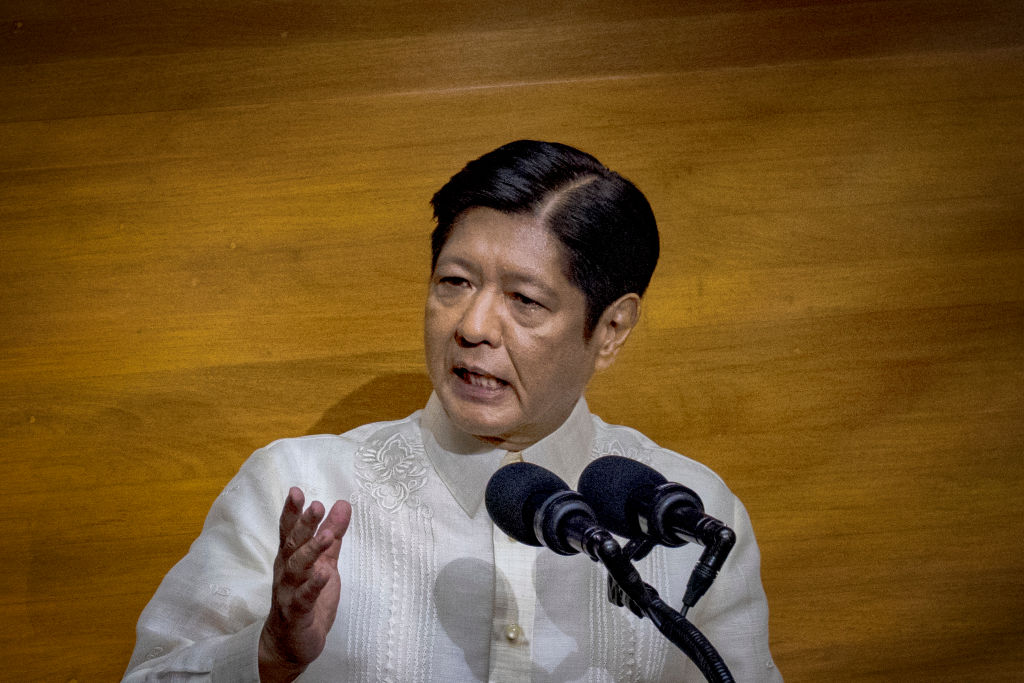
PH Pres. Ferdinand Marcos Jr. Inaugurates Opening of New LRT-1 Stations
Philippine President Ferdinand Marcos Jr. went to the Light Rail Transit Line 1’s (LRT-1) Dr. Santos Station in the Manila suburb of Parañaque on Friday (Nov. 15) to inaugurate the first phase of the rail line’s Cavite Extension, which is set to be open to the public the next day (Saturday, Nov. 16).
The Philippine Daily Inquirer reported that Marcos rode on the driver’s cab of the coach set that traveled to the five new stations of the rail line: Redemptorist-Aseana (in front of Baclaran Church); MIA Road (near the intersection of Roxas Blvd./CAVITEX and NAIA Road); Asiaworld-PITX (located beside the Parañaque Integrated Terminal Exchange); Ninoy Aquino Ave. (the nearest station to Manila’s Ninoy Aquino International Airport to date); and Dr. A. Santos (an intermodal transport terminal near SM Sucat), where a plaque unveiling ceremony was held prior. Several key government officials and stakeholders were also aboard the inaugural train ride.
LOOK: President Ferdinand R. Marcos Jr. takes the inaugural trip of the LRT-1 Cavite Extension Project. (📷: RTVM) pic.twitter.com/2SyopHvgFI
— PTVph (@PTVph) November 15, 2024
Marcos Seeks to Expand PH Rail Systems
The LRT-1 Cavite Extension was initially proposed during the administration of Joseph Ejercito Estrada and was initially funded and announced under the Benigno Aquino III presidency.
During his speech, Marcos emphasized on the fact that LRT-1 was the first urban rapid transit system in Southeast Asia, which was launched by his father and predecessor, Ferdinand Marcos Sr., and credited past administrations for keeping the project alive.
“We owe this progress to the hard work and dedication of my predecessors,” he said. “We must recognize their roles in helping [make] this dream a reality.”
Unlike older stations that were constructed in the 1980s, the new stations would provide modern accommodations to passengers with disabilities, such as elevators, escalators, and tactile guides.
During an ambush interview upon arrival at Redemptorist-Aseana Station, Marcos said that his administration intends to add more rail projects.
WATCH: Pinatitiyak ni Pang. Marcos, Jr. na madadagdagan pa ang rail projects kasunod ng pagbubukas ng LRT 1 Cavite Extension.
“Napakalaking maibibigay na ginhawa, at mas mabilis, makapag-save ng time, at simple lamang ang pagsakay ng tren.” @Radyo630 (🎥 MPC Pool) pic.twitter.com/61fGnDV0iC
— Christian Yosores (@chrisyosores) November 15, 2024
“Riding a train provides a great relief [to commuters], and it is faster and simple,” he told reporters in Tagalog.
To date, LRT-1 is only one of several rail projects currently under construction, with the creation of the MRT-7, Metro Manila Subway (MMS), and North-South Commuter Railway (NSCR) — a rail line running along the old Philippine National Railways’ (PNR) right-of-way — currently in progress.
LRT-1’s Future
Three more stations of the current project are set to be constructed in the direction of Las Piñas and Bacoor in the province of Cavite. Prime Asset Ventures, the investment conglomerate of former Philippine senator Manny Villar intends to bid on constructing the said phases, as well as the proposed LRT-6 Cavite Line from Niog Station in Bacoor (the proposed terminus of the LRT-1 Cavite Extension) to Dasmariñas. Prime also proposed to extend LRT-1 up to Tagaytay.
Bilyonaryo reported in January that Ayala Corporation (AC) was intending to sell its 35% stake in Light Rail Manila Corporation (LRMC), the private company operating the LRT-1 line, to Prime after Manny V. Pangilinan-led Metro Pacific Investments (MPI) intended to buy AC’s stake if the Marcos administration would approve its fare hike petitions, which it had proposed since 2015. MPI sold part of its stake to Japan’s Sumitomo Corp. in 2020 while retaining 35.8% of it to itself.